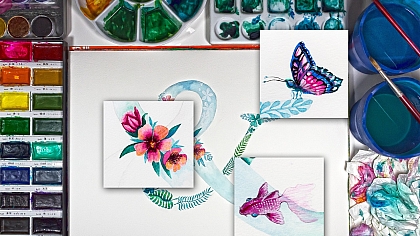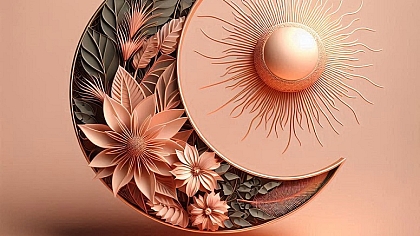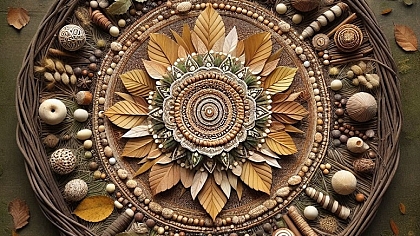
Little Treasures: Turning Everyday Finds Into Beautiful Junk Journals
Junk journaling is more than just a craft; it's a creative way to breathe new life into ordinary things. There's something magical about collecting bits and pieces from your everyday life—ticket stubs, old postcards, even pressed flowers—and turning them into a personal keepsake. Each journal becomes a reflection of your unique experiences and the little treasures you stumble upon.
Whether you’re a seasoned crafter or new to junk journaling, you’ll quickly see that the beauty lies in its imperfections. It's about embracing the quirks and charm of everyday finds, transforming them into something that tells your story.
In this guide, we’ll explore how to gather those little treasures, preserve them, and turn them into a beautiful junk journal that’s as meaningful as it is creative.
1. Finding Inspiration in Everyday Objects
The heart of junk journaling is discovering beauty in the mundane. What might look like an ordinary scrap of paper or a stray ribbon to someone else can become a delightful addition to your journal. The key is to keep an open mind and see potential in everyday objects.
Think about your daily routine. Do you enjoy your morning coffee at a local café? That receipt or sugar packet can serve as a charming memory of your favourite spot. Do you collect postcards from your travels or even just admire the packaging from your latest online order? These are all items that can find a home in your journal. The goal is to capture moments and memories in physical form, giving new meaning to objects you might have otherwise discarded.

Nature is also a great source of inspiration. A pressed flower from your garden or a leaf collected during a fall walk can add a beautiful organic touch to your pages. Everyday life is filled with hidden gems—you just need to be on the lookout!
2. Gathering Your Little Treasures: What to Look For
When it comes to gathering materials for your junk journal, anything and everything can be useful. The charm of junk journaling is that there are no strict rules. Here’s a list of some common—and unexpected—items to start collecting:
- Paper scraps: Wrapping paper, gift tags, old greeting cards, envelopes, and newspaper clippings are great for layering and decorating your pages.
- Tickets and receipts: Movie stubs, concert tickets, and receipts from memorable outings are perfect little mementoes to tuck into your journal.
- Fabric and ribbon: Scraps of fabric or ribbon from clothing tags or gifts can add texture and colour to your pages.
- Postcards and letters: Vintage or modern, postcards and letters add a personal and nostalgic touch.
- Nature finds: Pressed flowers, leaves, feathers, and even tiny pebbles can give your journal an earthy, organic feel.
- Packaging and labels: Interesting food packaging, clothing tags, and labels can add a quirky or vintage element to your pages.
The beauty of junk journaling is that you’re not limited by traditional crafting materials. You can reuse, recycle, and upcycle whatever you have on hand. And best of all, every piece you collect tells a story or holds a memory that makes your journal unique.
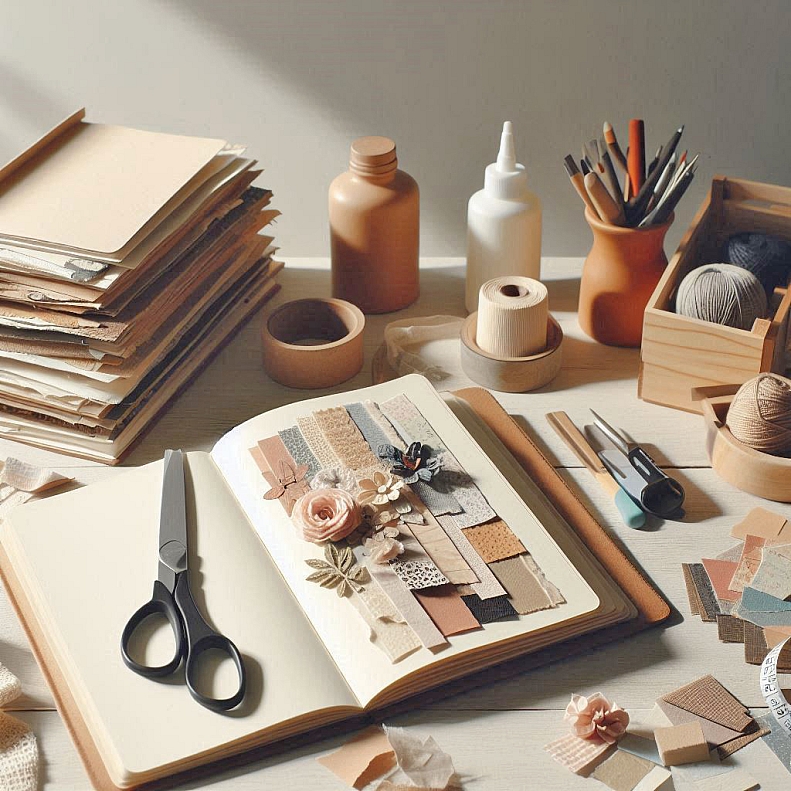
3. Preserving Your Finds: How to Prepare Materials for Your Journal
Once you've gathered your little treasures, it's important to prepare them for your journal so they last and look their best. Many of the items you collect—like ticket stubs, pressed flowers, and fabric scraps—can be fragile or prone to damage over time. Here are a few tips on how to preserve and prepare your materials for longevity:
-
Cleaning and pressing: For any paper items, like postcards or receipts, gently wipe them down with a dry, soft cloth to remove any dust or dirt. For delicate fabric pieces, a quick hand wash and air drying can help ensure they don’t carry stains or odours. Pressed flowers or leaves can be flattened between heavy books or with a flower press to ensure they stay neat and flat.
-
Laminating delicate pieces: If you want to preserve particularly fragile or thin paper, laminating them is a great option. You don’t need a full laminating machine; simple self-adhesive laminating sheets or clear tape can do the trick. This works especially well for items like pressed flowers, small clippings, or fragile postcards.
-
Sealing fabrics and ribbons: If you’re incorporating fabric or ribbon, be sure to seal the edges to prevent fraying. A dab of clear fabric glue or even a quick stitch can work wonders. Fabric sealants are another great way to keep your material from unravelling without the need for sewing.
By taking these simple steps to preserve your finds, you'll keep them looking fresh and vibrant in your journal, allowing you to enjoy them for years to come.
4. Crafting a Theme: Turning Finds into a Story
One of the most rewarding parts of junk journaling is creating a theme or story from your collection of items. You might start off with seemingly random pieces—a postcard here, a scrap of fabric there—but when you bring them together in a thoughtful way, they start to tell a unique story. Here’s how to bring cohesion to your journal:
-
Let your items inspire a theme: Sometimes the items you collect will naturally guide you toward a theme. For example, if you've collected travel receipts, boarding passes, and hotel brochures, you can craft a travel-themed journal that tells the story of your adventures. Likewise, nature finds like leaves and pressed flowers can inspire a garden or outdoor exploration theme.
-
Choose a colour palette: Sticking to a general colour palette can help tie different elements together. For instance, if your collected items feature soft pastels, use similar tones in your background papers and embellishments. This creates a visually pleasing flow throughout the pages.
-
Tell a story with your layout: As you place items in your journal, think about how they interact. A postcard from a special trip can be paired with a ticket stub or a pressed flower you picked while travelling. These connections help weave a narrative that makes your journal feel intentional and personal.
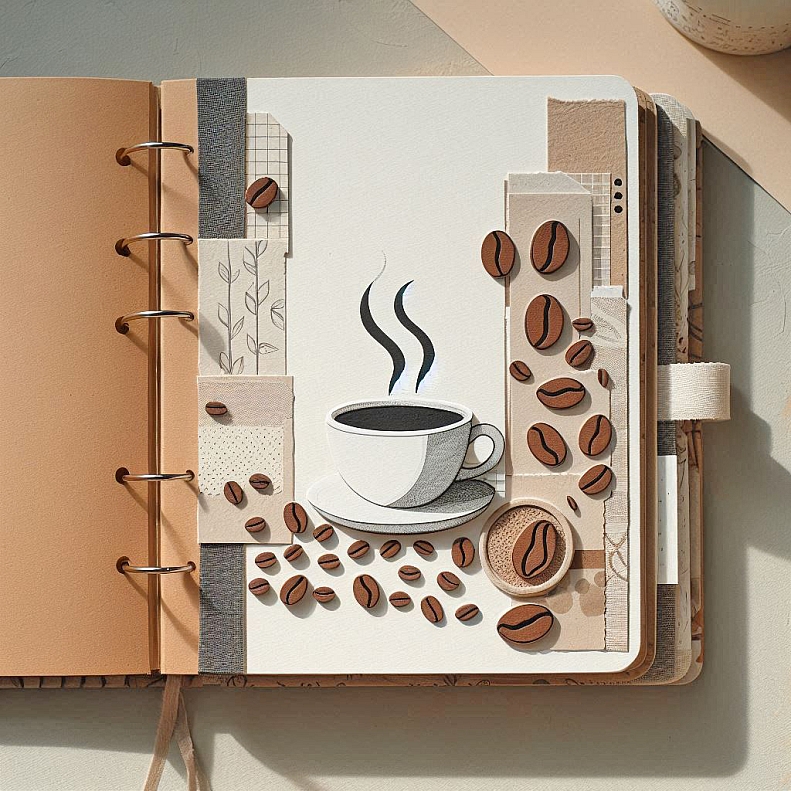
A cohesive theme doesn't mean everything has to be perfectly matched, but rather that your journal feels unified and reflective of a certain experience or mood. It’s this storytelling element that makes junk journals so special!
5. Incorporating Texture: Using Fabric, Ribbons, and Paper Scraps
Adding texture to your junk journal can bring it to life in a whole new way. By incorporating materials like fabric, ribbons, and paper scraps, you’ll create a tactile experience that draws the reader into the pages. Here are some fun ways to add texture using everyday finds:
-
Fabric pieces: Scraps of fabric from old clothes, handkerchiefs, or even thrifted fabric remnants can be cut into small shapes and glued onto your pages. Try layering different fabrics for a patchwork effect or using them as a background for your ephemera.
-
Ribbons and twine: Ribbons can be used to create borders around your pages or even as page markers. You can also tie small bows to embellish a corner or attach them to tags. Twine or yarn can be glued down to create lines or borders, adding a rustic, handmade feel to your journal.
-
Torn paper edges: Instead of cutting your paper with scissors, try tearing the edges to give your journal a more rugged, handmade feel. You can layer torn scraps of old wrapping paper, book pages, or even envelopes to create a rich, textured background.
-
Dimensional stickers or buttons: If you want to add a little more pop, dimensional stickers or small buttons can bring your pages to life. Just make sure to keep the bulkiness in check so your journal still closes neatly.
Playing with different textures makes each page feel unique, and it’s a wonderful way to make your journal more interactive and fun to explore.
6. Making Your Own Ephemera: Transforming Scraps into Art
One of the joys of junk journaling is that you don’t always need store-bought decorations or embellishments. You can create your own ephemera from the scraps and bits you’ve collected, adding a truly personal touch to your journal. Here are a few simple ways to turn everyday scraps into beautiful pieces of art:
-
Handmade tags: Turn leftover pieces of cardstock, gift tags, or even food packaging into charming tags for your journal. Cut them into fun shapes, punch a hole at the top, and add some ribbon or twine. You can leave them blank for future notes or decorate them with stamps, stickers, or doodles.
-
Collaged journaling cards: Grab small pieces of paper—like magazine clippings, book pages, or old maps—and layer them onto a sturdy cardstock base to create unique journaling cards. You can write little notes on the back or use them as decorative inserts.
-
DIY envelopes: Use paper scraps to make your own miniature envelopes. These are great for tucking in small notes, photos, or other mementoes. You can even personalize them by adding doodles or writing on the outside.
-
Paper embellishments: Create decorative borders, corners, and frames by cutting out shapes from leftover paper. Simple shapes like hearts, stars, or even florals can be layered onto your pages to add an extra pop of detail.
The beauty of making your own ephemera is that it’s entirely up to you how simple or intricate you want to go. Plus, it adds another layer of personal craftsmanship to your journal, making it all the more meaningful.
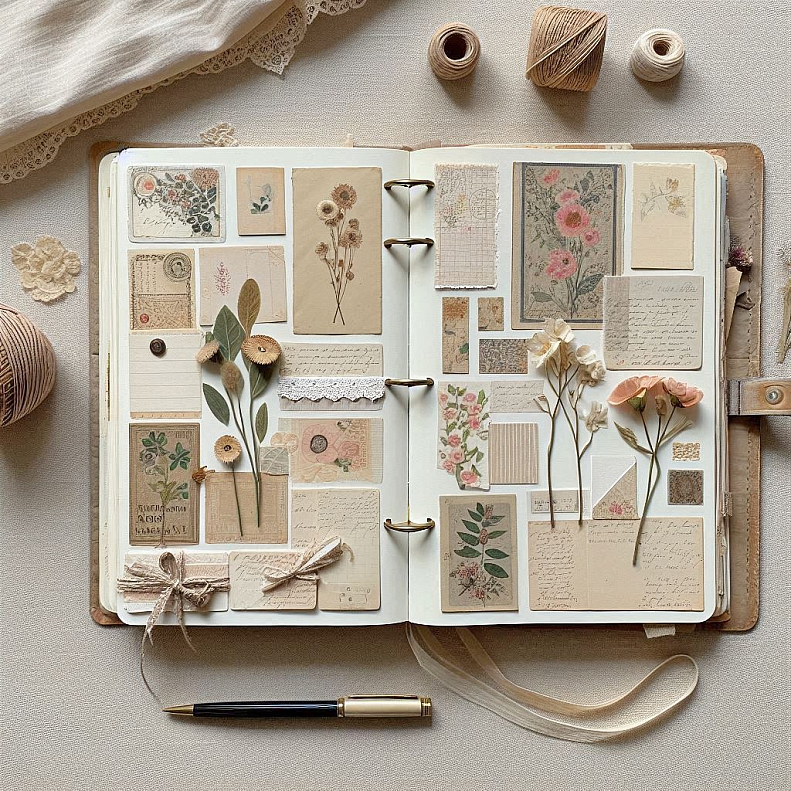
7. Pocketing the Past: Creating Pockets for Your Keepsakes
Junk journals are the perfect place to store little keepsakes and memories, and creating pockets is a fun and practical way to keep your treasures safe. Whether it's a ticket stub from your favourite concert or a handwritten note, pockets give your journal a dynamic, interactive feel. Here are some easy ways to add pockets to your pages:
-
Simple paper pockets: You can make basic pockets by folding and glueing down paper scraps along three edges, leaving the top open to slip in small items. Use leftover cardstock, patterned paper, or even old envelopes to create pockets that match your journal's theme.
-
Fabric pockets: For a softer, textured feel, cut squares or rectangles of fabric and glue or stitch them onto your pages. Fabric pockets can add a cozy touch, perfect for tucking away notes or small trinkets.
-
Layered tuck spots: Instead of full pockets, create smaller tuck spots by attaching ephemera or paper scraps at just two corners. These are great for casually tucking in a small postcard, photo, or note, allowing the item to peek out from the page.
-
Envelope flips: Attach envelopes to your pages in a way that they can flip open. This not only gives you a place to store items but also adds a fun, interactive element to your journal.
Pockets don’t have to be perfect or elaborate—they just need to be functional and a bit creative. They make your journal even more of a treasure chest, filled with personal mementoes and surprises waiting to be rediscovered.
8. Final Touches: Adding Charms, Stamps, and More
Once you've arranged your finds and crafted your pockets, it’s time to add the final touches that will make your junk journal feel complete. These little details can really elevate your journal from a collection of scraps to a work of art. Here are a few ways to finish your journal with flair:
-
Charms and beads: Attach small charms, beads, or trinkets to the spine or ribbons of your journal. These can be tiny keys, hearts, or whatever speaks to the theme you’re working with. They add a bit of sparkle and personality to your finished piece.
-
Stamps and ink: Rubber stamps are an easy way to add decorative elements or texture to your pages. Choose vintage stamps, floral designs, or even letters to spell out a meaningful word. If you don’t have stamps, you can always use ink to create simple patterns or borders on your pages.
-
Washi tape: This versatile tape comes in endless designs and colours and is perfect for adding borders or accenting your pages. You can even use washi tape to create miniature frames around photos or paper scraps.
-
Hand-drawn elements: If you like to doodle, consider adding small hand-drawn designs to your pages. It could be something as simple as a few stars, flowers, or whimsical swirls in the margins. This personal touch adds warmth and individuality to your journal.
-
Pressed seals or wax: For a truly vintage touch, consider using wax seals on certain pages. It can add a classic, old-world feel, especially if you’re working on a more elegant theme.
These small embellishments might seem minor, but they bring the whole journal together, creating a finished piece that reflects your personal style and creativity.

9. Journaling from the Heart: Personalizing with Notes and Sketches
While the visual elements of your junk journal are important, don’t forget that it’s also a place to pour out your thoughts, feelings, and memories. Personalizing your journal with handwritten notes or small sketches can make it even more special. Here are some ideas to bring your words and creativity into the mix:
-
Handwritten notes: Leave little notes throughout your journal, reflecting on the items you’ve collected or the memories they represent. A simple phrase or date next to a ticket stub or a pressed flower can give it even more meaning.
-
Creative prompts: If you’re feeling stuck, try using prompts like “What does this object remind me of?” or “What emotion does this page evoke?” This can spark ideas for what to write or draw on the page.
-
Small sketches or doodles: Even if you’re not an artist, small doodles of flowers, stars, or abstract patterns can fill in the gaps between your collected items and make your journal pages feel more alive.
Your handwriting, sketches, and notes are what truly make your journal a reflection of you. It’s a personal keepsake that captures your thoughts and memories, turning your everyday finds into a treasure trove of creativity and emotion.



